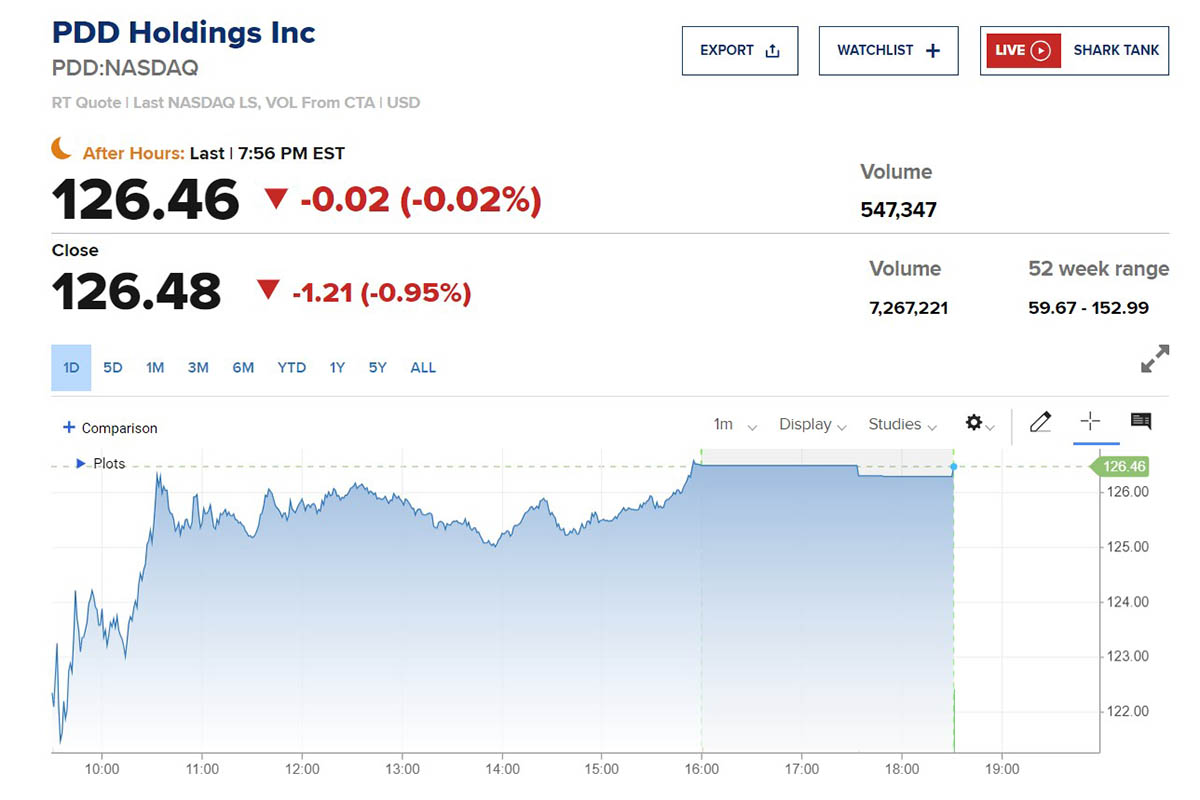The Future of Shopping: Online Shopping Trends
The digital shopping landscape is experiencing transformative changes. A standout phenomenon is the rise of platforms like Temu, which, after its launch in September 2022, quickly outperformed giants like Amazon and Walmart in app store rankings.
Temu’s aggressive marketing, including a $14 million Super Bowl advertisement, is part of a strategy to amass a user base nearing 100 million by the end of its first year.
Sustainability is becoming a critical factor in consumer choices, with 60% of U.S. consumers wary of companies falsely claiming eco-friendly practices. This trend underscores the importance of e-commerce platforms to demonstrate genuine and measurable progress toward sustainability.
Mobile commerce is poised to dominate, with 91% of consumers making online smartphone purchases, and mobile transactions are expected to account for $710 billion by 2025. This shift necessitates a mobile-first approach in UX design and the integration of convenient mobile payment options.
Frictionless checkouts are critical in converting sales, with Amazon leading the way by catering to consumer preferences across different devices. Flexible payment methods, including buy-now-pay-later options and digital wallets, enhance the checkout experience and meet customer expectations.
In summary, the future of online shopping is shaped by the integration of technology, personalized customer experiences, and a solid commitment to sustainability. These trends highlight the dynamic nature of e-commerce and the need for businesses to adapt to stay competitive.
How Safe is Temu Shopping: The Remarkable Emergence of Temu
The rise of Temu in the e-commerce sector is nothing short of extraordinary. Since its launch in September 2022, Temu not only quickly climbed app store rankings but also managed to secure a vast user base in the US, with reports indicating 82.4 million US-based users as of September 2023.
Temu’s dynamic advertising strategies significantly boosted this explosive growth, including a notable Super Bowl ad campaign, which contributed to the app being downloaded 38.8 million times worldwide by August 2023.
By September 2023, Temu’s monthly download figures surged to 40.54 million, and by October 2023, the total downloads of the Temu app neared 235 million, making it the world’s most downloaded marketplace mobile app.
This rapid adoption has positioned Temu as a formidable competitor to established e-commerce giants like Amazon and Walmart, especially considering its strategy of offering low-cost products directly from China.
Temu’s parent company, PDD Holdings Inc., reported a total revenue of $18.93 billion in 2022, showcasing the financial backing and market strength behind Temu’s operations. Furthermore, Temu’s Gross Merchandise Volume (GMV) saw a meteoric rise from $3 million in September 2022 to $1 billion by June 2023, underscoring the platform’s significant transaction volume and market penetration.
This remarkable emergence of Temu highlights a shift in consumer preferences towards platforms that offer competitive pricing and a wide range of products, challenging traditional retail and e-commerce models. With Temu’s focus on Generation Z, constituting 35% of its user base, and its success in international markets like the UK and Canada, the platform is set to redefine e-commerce trends and consumer shopping habits in the coming years.
Introduction to PDD Holdings Inc. 
PDD Holdings Inc., the parent company of the e-commerce platform Temu, has shown significant performance in the stock market. As of the latest data, PDD Holdings Inc. (PDD) was trading at $125.86, marking a decrease of $1.83 or -1.43%. The company has experienced a wide 52-week range in its stock price, fluctuating between $59.67 and $152.99, indicating considerable volatility and strong growth potential.
In 2022, PDD Holdings reported a substantial increase in revenue, reaching 130.56 billion, a 38.97% rise compared to the previous year’s 93.95 billion. This growth underscores the company’s expanding market presence and operational success.
Analysts have a strong buy consensus on PDD stock, with a 12-month price target set at $123.83, suggesting a slight downside from the current price.
PDD Holdings has made a notable impact in the U.S. and global markets, especially with the rapid ascent of Temu. The platform had over 70 million active users in the United States as of May 2023, with a significant portion of downloads originating from the US.
Temu’s strategy of offering competitive products and aggressive marketing campaigns, including significant investment in Super Bowl advertisements, have contributed to its remarkable user growth and market penetration.
For more detailed information on PDD Holdings Inc.’s stock performance and financials, you can visit Yahoo Finance and Stock Analysis via the provided links.
Walmart’s Digital Pursuit: Closing the Gap with Amazon
Despite Walmart’s significant global presence and dominance in the physical retail sector, the company is actively working to strengthen its digital presence to compete with Amazon’s e-commerce leadership.
Walmart’s strategic shift involves capitalizing on its vast network of physical stores and integrating them into its online strategy to serve dual purposes: as traditional shopping destinations and as fulfillment centers for online orders. This approach aims to enhance Walmart’s e-commerce capabilities and expedite its digital expansion.
In the face of Amazon’s formidable online retail presence, Walmart is making deliberate moves to bridge the gap. The CNBC Marathon’s “The Future Of Online Shopping” segment offers an in-depth look at Walmart’s focused endeavors to augment its digital footprint and reach a more comprehensive online customer base.
The following summary presents the key e-commerce strategies Walmart is employing, as outlined in the documentary:
The Rising Phenomenon of Livestream Shopping
Live shopping in the U.S. is gaining momentum, drawing inspiration from China’s booming market. Major platforms like Amazon and TikTok are investing in this interactive shopping experience, allowing creators to engage with their audience and showcase products directly in real time.
This approach combines the immediacy of online shopping with the personal touch of social media influence, presenting opportunities and challenges in adapting to U.S. consumer preferences and cultural nuances. Consider exploring these platforms and creators’ detailed strategies and examples for more in-depth insights.
Online Shopping Trends: Strategic Adaptations of E-commerce Titans
- Adaptation from China’s Success: The chapter opens by acknowledging the success of live shopping in China, where platforms like Alibaba have turned it into a billion-dollar industry. The U.S. market, witnessing the potential of integrating entertainment with online shopping, is now seeing its major platforms exploring live shopping to engage consumers uniquely and directly.
- Platform Investments: Amazon, TikTok, YouTube, and Shopify are identified as key players in the U.S. making significant investments in live shopping infrastructure. Each platform brings its own strategy to the table; Amazon leverages its vast e-commerce ecosystem, TikTok uses its strong base of influencers and content creators, YouTube capitalizes on its video content dominance, and Shopify provides tools for merchants to connect with their customers live.
- Behind the Scenes with Creators: The chapter provides insights into creators’ experiences, such as Myriam Sandler, who embraces live shopping as a new way to connect with their audience and drive sales. These creators play a crucial role in the live shopping ecosystem, bridging brands and consumers. They share their firsthand selling experiences via live streams, highlighting personal interaction and immediate feedback as key advantages of this model.
- Consumer Engagement: Live shopping offers an interactive way for consumers to shop, combining the trust and influence of social media creators with the immediacy of online purchasing. The segment sheds light on the engagement potential of live shopping, where viewers can directly ask questions, get real-time answers, and see products in action before making a purchase decision.
- Challenges and Opportunities: While live shopping presents a massive opportunity for e-commerce growth, the chapter also addresses its challenges in the U.S. market. Cultural differences, consumer behavior, and the existing e-commerce landscape present hurdles that platforms and creators must navigate. However, the potential for creating a new shopping paradigm is significant, with live shopping offering a blend of entertainment, trust, and convenience that could reshape consumer expectations and behaviors.






















